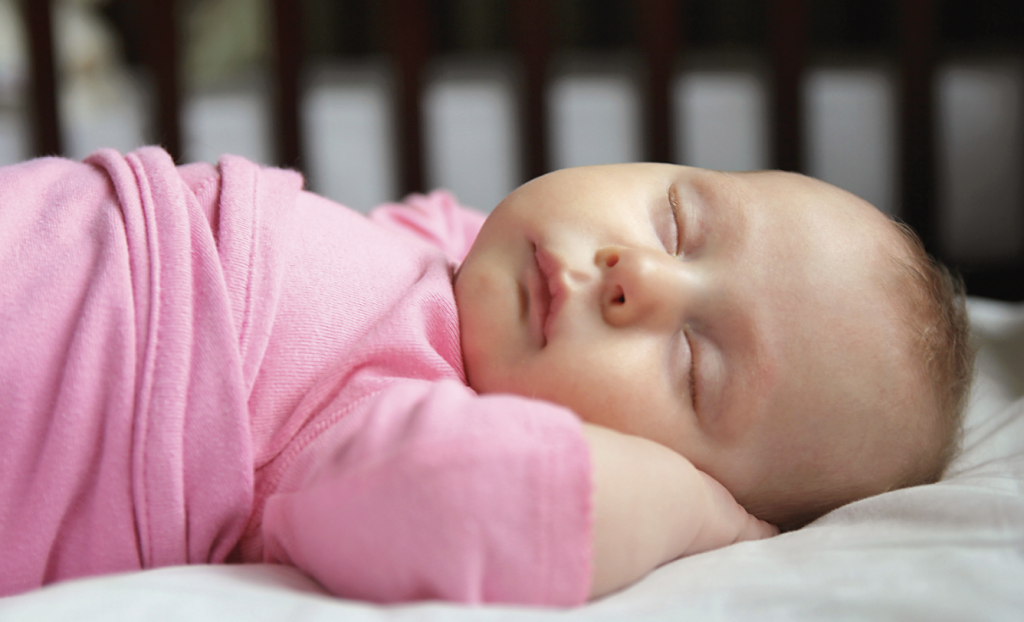
10 Steps to Help Baby Sleep Safely
By Maria Bickell, RN, BSN, IBCLC, Boone Family Birthplace
Nothing can fully describe the feeling of bringing your brand-new baby home with you for the first time. Many parents desire and seek some sort of daily routine. It may take a while to adjust, as parents often get advice from many different sources. Unfortunately, one topic that isn’t usually discussed nearly enough is safe sleep practices.
Did you know that the most vulnerable time for sleep-related infant deaths is between two and four months old? This is usually when parents are just starting to feel like they’re settling into their new life with a newborn. While sleep-related infant deaths cannot always be fully prevented, these 10 steps can help parents understand the common factors that can create the perfect storm for this to occur.
1. Control the risk factors that you can control, starting with pregnancy. It’s simple – visit your doctor for regular prenatal care visits, then visit your pediatrician once baby arrives. Early identification and prevention of risk factors, such as low birth weight, prematurity and birth spacing, can help protect your baby
2. Give your baby a healthy start by breastfeeding for as long as possible. Consider offering a pacifier when putting baby to sleep, but if you’re breastfeeding, wait until after your baby is one-month-old. These steps have been shown to be protective against Sudden Infant Death Syndrome, or SIDS.
3. Make sure your baby always sleeps alone. If possible, share your bedroom, but never your bed! Each and every baby (including multiples) should have their own separate place for sleep that is always sleep-ready. Remove all bumper pads, stuffed animals, toys, pillows, blankets, and wedges or sleep positioners – these present a suffocation risk.
4. Baby should always be placed flat on their back to sleep. Side-sleeping is unsafe for a newborn. Contrary to popular belief, on-back positioning actually prevents reflux or aspiration (accidental ingestion of stomach acid or other substances into the lungs) and offers better positioning of the baby’s trachea (windpipe) and esophagus (swallowing tube to stomach).
5. Baby should sleep in a clutter-free crib with a firm surface and a tightly fitted sheet. Never lay your baby to sleep on a water bed, sofa or any other soft surfaces. Car seats, swings and baby suits are not suitable for sleeping. Crib mattresses should never be placed against a wall – this can present a trap hazard for baby. Remember: Your baby should sleep alone in their crib with nothing else.
6. Don’t smoke. (Or at least be as smoke-free as possible.) This includes not smoking during pregnancy. Also, don’t allow others to smoke around your baby.
7. Help your baby avoid overheating during sleep. Dress your baby in light clothing for sleep. Keep the room temperature at a comfortable level, just as you would for an adult – usually between 68 to 72°F. A light sleep sack or wearable blanket is okay, but never use loose blankets. A sleep sack with swaddle feature is okay for babies under two months.
8. Give your baby plenty of supervised tummy time while awake. Tummy time is essential for your baby’s development. Once your baby has become accustomed to it, usually around four or five months old, they will assume their own sleep position. A baby who is unaccustomed to tummy sleeping is at risk! A good way to see if your baby is ready is to reposition your baby to lie on their back the first three times you notice they’ve rolled onto their tummy in bed.
9. Make sure all of your baby’s caregivers know and follow these important steps, so your baby is as safe as possible during sleep.
10. To keep your baby safe while sleeping, remember your ABCDs:
A is for Alone
B is for Back (Think “tummy to play, back to sleep”)
C is for Crib (and Clutter-free)
D is for Don’t Smoke
and Don’t Overheat